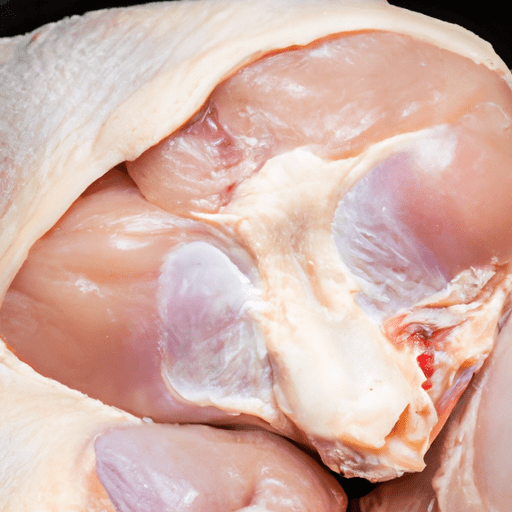The Greatness of Bone-In, Skin-On Chicken Breast Halves
When it comes to versatile and succulent cuts of meat, it’s hard to beat bone-in, skin-on chicken breast halves. These delectable pieces of poultry offer a variety of cooking options, a multitude of flavors, and a level of juiciness that will leave your taste buds dancing. In this blog post, we will explore the tantalizing taste, common uses, nutritional value, and intriguing facts surrounding bone-in, skin-on chicken breast halves.
The Taste of Tender Juiciness
Bone-in, skin-on chicken breast halves are renowned for their moist and tender texture. The bone acts as an insulator, helping to maintain even heat distribution during cooking. This results in a juicier and more flavorful chicken breast, ensuring a memorable dining experience. The skin, when properly prepared, adds a delightful crispy and savory element that elevates the overall taste.
Versatility in the Kitchen
Bone-in, skin-on chicken breast halves are incredibly versatile in the culinary world. They lend themselves to a wide range of cooking methods, from grilling and baking to pan-searing and braising. This adaptability allows for endless creativity in the kitchen, whether you’re whipping up a comforting roast, a flavorful curry, or a juicy grilled masterpiece. The bone and skin provide extra flavor and richness, making every bite a true delight.
Nutritional Powerhouse
Not only do bone-in, skin-on chicken breast halves tantalize our taste buds, but they also offer impressive nutritional benefits. Packed with high-quality protein, these cuts of chicken contribute to muscle growth and repair. They are also a rich source of essential vitamins and minerals, including vitamin B6, niacin, phosphorus, and selenium. What’s more, the skin, when consumed in moderation, provides healthy fats that support brain function and cellular health.
A Brief History and Fascinating Facts
Chicken has been a staple in human diets for centuries, with evidence of domestication dating back to around 6000 BC. The bone-in, skin-on chicken breast halves we enjoy today are the result of centuries of selective breeding and culinary experimentation. Historically, chickens were often prepared with the skin-on to provide insulation during cooking and to enhance flavor. The bone marrow also contributes to the overall richness of the dish.
Here are a few interesting facts about bone-in, skin-on chicken breast halves:
- The skin acts as a natural barrier, helping to retain moisture and flavor while preventing the meat from drying out.
- Removing the bone yourself not only saves money but also allows you to utilize the bone for stocks and broths, adding depth to your culinary creations.
- The bone-in, skin-on chicken breast halves are often the preferred choice for certain dishes, such as traditional chicken cordon bleu or succulent Coq au Vin.
In conclusion, bone-in, skin-on chicken breast halves are a culinary treasure, offering a delicious taste, incredible versatility, and notable nutritional benefits. Whether you grill it to perfection, bake it with aromatic herbs, or braise it in a rich sauce, these chicken breast halves are sure to please even the most discerning palate. So, the next time you find yourself shopping for chicken, give the bone-in, skin-on variety a try – you won’t be disappointed!
Bone-in, Skin-on Chicken Breast Halves
Origin: Chicken is believed to have been domesticated from the red jungle fowl in Southeast Asia around 4,000 years ago. Since then, chickens have been selectively bred for their meat, eggs, and feathers, leading to the different breeds we have today.
Common Uses: Bone-in, skin-on chicken breast halves are a versatile ingredient used in a wide range of dishes. They can be grilled, roasted, baked, sautéed, or used in stews, soups, and casseroles. The bone and skin help enhance the flavor during cooking and can be removed before serving if desired.
Nutritional Benefits: Chicken breast is known for being a lean source of protein. It is low in fat, particularly when the skin is removed, and has a high protein-to-calorie ratio. Chicken breast also contains essential vitamins and minerals such as niacin, vitamin B6, phosphorus, and selenium.
Unique Properties: The bone-in, skin-on chicken breast halves retain more moisture and tenderness during cooking compared to boneless, skinless versions. The bone imparts additional flavor to the meat, while the skin helps to keep the moisture intact. The skin can become crispy when cooked, adding a desirable texture to the dish.
Historical Significance: Chicken has been consumed by humans for thousands of years and plays a significant role in many culinary traditions worldwide. Different cultures have their own unique methods of preparing and flavoring chicken. For example, in American Southern cuisine, fried chicken made with bone-in, skin-on pieces has become an iconic dish.
Note: While bone-in, skin-on chicken breast halves can be a flavorful and nutritious choice, it’s important to handle and cook chicken safely to reduce the risk of foodborne illness.




Use the share button below if you liked it.
It makes me smile, when I see it.